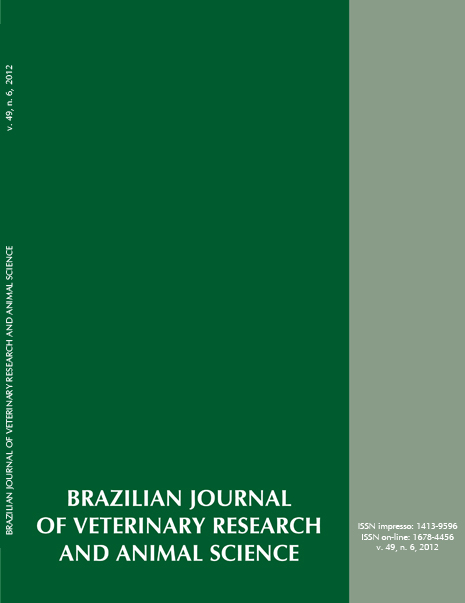A seroepidemiological study of leishmaniasis in horses in the region from Araçatuba-SP, Brazil, an endemic area for visceral leishmaniasis
DOI:
https://doi.org/10.11606/issn.1678-4456.v49i6p500-502Keywords:
L. chagasi, Cutaneous leishmaniasis, ELISA, rk39Abstract
The aim of the present study was to perform a leishmaniasis survey in horses from Araçatuba, São Paulo, an endemic area of Brazil. Of the 466 horses tested for the presence of anti-Leishmania chagasi titers by ELISA, 68 (14.59%) were seropositive, with titers varying between 0.324 and 0.813. ELISA positive samples were also tested by immunocromatography and 19/466 (4.08%) were positive. The results of the present study indicated that equines are in contact and can attract phlebotomines, and highlight the necessity of a more accurate investigation on the role played by the horses living in endemic areas, in order to help to control the spread of the illness.
Downloads
Downloads
Published
Issue
Section
License
The journal content is authorized under the Creative Commons BY-NC-SA license (summary of the license: https://





